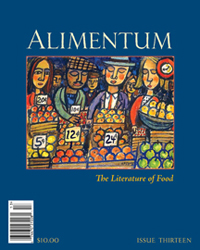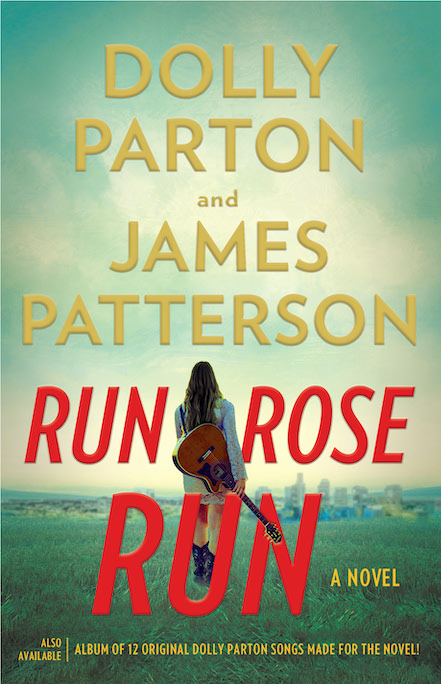Tasty Reading
Chef-editor Paulette Licitra serves up Alimentum, the first literary review dedicated entirely to food
In the last ten years, foodie culture has exploded. One look at the magazine rack or cable guide, and it’s obvious that the food-as-entertainment business is booming. From home chefs and party hosts to gastronomic adventurers and competitive gluttons, there’s something, it seems, for everyone. But in this universe of so-called food porn, precious little attention is paid to creative writing about food. Into the gap has jumped Alimentum: The Literature of Food, the first literary journal dedicated exclusively to themes of table, kitchen, market, and sustenance. In its pages—and in a revamped website, launching today—food becomes a savory (or sweet) organizing principle that writers can apply to themes as wide as human experience itself.
 “This kind of writing doesn’t really have a place because most food writing is journalism,” says Alimentum’s editor and publisher, Paulette Licitra, a former New Yorker who now makes Nashville home. “Take the Oxford American. When they do their food issue, it’s always about somebody’s restaurant or some old cook who’s been there a hundred years—which is great, and we’ll pick up pieces like that sometimes. But food is a subject that elicits a lot of creative writing, too. With Alimentum, food is the driving force. It’s something really close to everybody’s heart, head, and soul. It could be a hate relationship, but everybody has something to say. And if somebody’s going to write an amazing poem or an amazing nonfiction essay that just happens to have a lot of food in it, this is the place for it.”
“This kind of writing doesn’t really have a place because most food writing is journalism,” says Alimentum’s editor and publisher, Paulette Licitra, a former New Yorker who now makes Nashville home. “Take the Oxford American. When they do their food issue, it’s always about somebody’s restaurant or some old cook who’s been there a hundred years—which is great, and we’ll pick up pieces like that sometimes. But food is a subject that elicits a lot of creative writing, too. With Alimentum, food is the driving force. It’s something really close to everybody’s heart, head, and soul. It could be a hate relationship, but everybody has something to say. And if somebody’s going to write an amazing poem or an amazing nonfiction essay that just happens to have a lot of food in it, this is the place for it.”
Licitra’s interest in gastronomy came fairly late. She had traveled to Rome, Italy, for undergraduate work in English literature and Italian cultural studies, but it was the local cuisine that proved most memorable. On subsequent visits she studied with home cooks, picking up the subtleties of Roman cookery and culture. Careers in theater, film, television, and fiction writing followed, but Licitra never lost sight of her true passion. In 2003, she enrolled in New York’s Institute of Culinary Education, and upon graduation already had something likeAlimentum in mind.
“I had written for magazines about food and stuff like that, but I wasn’t interested in the latest food trends or what Chef So-and-So is doing,” Licitra says. “I liked literary writing, especially when literary writing takes on food, and that’s what Alimentum became.” Licitra contacted the editors of other literary journals and asked for their input. Her co-editor (and ex-husband), Peter Selgin, also proved a valuable resource. An author and creative-writing teacher himself, Selgin had contacts that were essential to getting Alimentum off the ground. Still, it was a monumental task. “If I’d known what I was getting into before I started, I probably never would have,” says Licitra.
Literary magazines rarely survive on subscriptions alone. In addition to putting the physical journal together, there was also the matter of finding sponsors. Licitra first approached her alma mater, The Institute of Culinary Education, which flatly turned her down. Undaunted, she approached ICE’s competition, the prestigious French Culinary Institute, which had a food-writing program. People there jumped at the opportunity. Along with Pamela’s Products (a California-based, gluten-free bakery), FCI continues to be the journal’s primary sponsor.
Alimentum went to press in 2006 while Licitra was still living in New York. It’s been published bi-annually (winter and summer) since. The journal has a distinctive look. Roughly pocket book-sized, the print edition always comes in at 128 pages, with original art decorating an eye-catching, single-color cover. The magazine’s spine and back feature a deconstructed version of the cover, which adds an air of whimsy to the design. Elegant and inviting, Alimentum has been praised by The New York Times’s Florence Fabricant as being “small enough to carry with you for mental and aesthetic nourishment.”
Selgin continues to serve as Alimentum’s co-editor and, along with poet and designer Claudia Carlson, is responsible for the magazine’s look. Most of the cover art is his, although several have been designed by Vanderbilt University art professor Marilyn Murphy. Managing editor Duane Spencer, poetry editor Courtney Davis, and web editor Eric LeMay round out the journal’s editorial staff. Alimentum’s contributors cover the waterfront, from best-selling authors like Oliver Sacks and Mark Kurlansky, the latter of whom sits on the journal’s advisory board, to first-time writers and gifted up-and-comers such as Ann Barry Burrows, whose “Long At Table” was a highlight of the last issue.
 A period piece regarding a young waitress’s poignant imaginings about a table of regulars, Burrows’s short story is typical of the way Alimentum employs food as a literary plot device. It’s also typical of the high level of prose found in the journal’s pages: “The glitter reflected the light from the doorway, sending sparks out into the vast space where we make a life while we live and breathe, out for all what waited for me to make it my own,” writes Burrows, as her protagonist leaves work for the last time.
A period piece regarding a young waitress’s poignant imaginings about a table of regulars, Burrows’s short story is typical of the way Alimentum employs food as a literary plot device. It’s also typical of the high level of prose found in the journal’s pages: “The glitter reflected the light from the doorway, sending sparks out into the vast space where we make a life while we live and breathe, out for all what waited for me to make it my own,” writes Burrows, as her protagonist leaves work for the last time.
“When you read the piece, you get the image of this Irish woman with the hair and everything, but she’s an American from Virginia with a voice that sounds nothing like that,” says Licitra of Burrows. “I was, like, ‘Where did you get that person?’ It’s so beautifully written. I love it when those submissions come in—and we get tons because we’re not picky about if someone’s been published before or if they have such and such credits. We go totally by the writing.”
Alimentum’s newly upgraded website is a wealth of information. In addition to food and menu poems—food-related poetry broadsheets originally intended for distribution in restaurants—the site features highlights from back issues (full issues to be available soon), book reviews, and a “Goodies” section that features, among other things, food-related gifts, music, and art. A featured food-blog section is in the works, and by year’s end, Licitra and her colleagues hope to have launched their first book on Alimentum Press, a food-centric publishing venture.
In addition to the magazine, Alimentum hosts regular “Eat & Greet” tours that include excursions into Nashville food enclaves, along with more extensive trips. Recent Eat & Greets have included cooking and market sorties to New York and Rome. Scheduled also are tours of Nashville’s Indian food and culture and an East Nashville Artisans tour. Licitra also hosts a cooking-class series called Cucina Paradiso. In weekly sessions, registrants master dishes like fresh-made spaghetti in spicy-crab-and-roasted-lemon sauce and mussels with white wine and Pernod.
According to Licitra, Alimentum’s readers aren’t necessarily foodies—though, as she points out, stories centered around food are the perfect accompaniment to cooking and other types of food writing. “But as far as this kind of writing goes, it’s endless and I think there’s more coming,” says Licitra. “Of course as I’m saying this I’m thinking of all those reality shows and how scripting has gone out the window, but story is really what people love—something that’s been structured to have that ding at the end. With us it’s the writing that’s important; the writing leads the way.”
To read the newly relaunched website of Alimentum, please click here.


